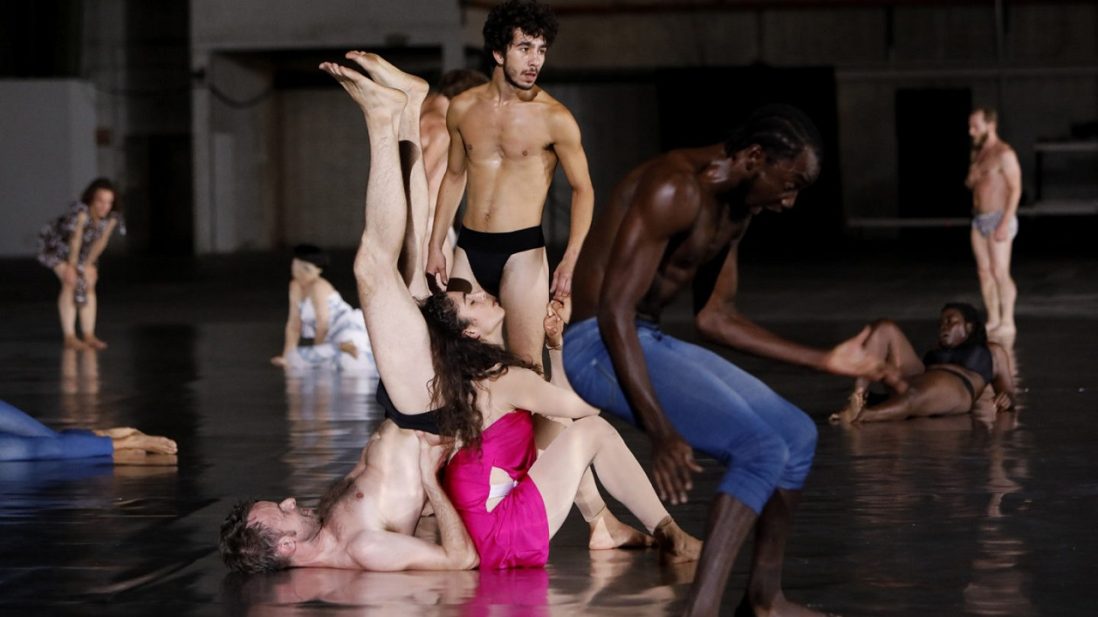10000 gestures
One dancer slides onto the floor, bringing his chin level with his feet. Another walks backwards, hands first. A third plays air guitar with his foot. The performers of 10000 gestures make a total of 10,000 different moves without repeating a single one.
In its glowing review, British newspaper The Guardian called it “a thrilling blizzard of movement”, but it’s a performance that could just as well be described as antichoreography. When the dancers meet each other on the floor, they don’t mirror each other’s gestures or look for a common theme. It’s a cacophony of dance, with 25 dancers all approaching movement from different angles.
Choreographer Boris Charmatz has said of 10000 gestures that it’s a choreographic anti-museum – it does not preserve anything but rather always invents something new. Each moment is unique. Every move disappears to give way to the next.
Somnole
The body has been described as a dancer’s instrument before, but Boris Charmatz’s solo performance SOMNOLE takes this notion one step further, his body becoming a musical instrument. Charmatz dances to his own whistle, elevating the themes of his performance.
SOMNOLE depicts the fragile state between asleep and awake, when the body is both passive and active. It examines our involuntary twitching and retreating thoughts in the moments just before sleep. The melodies that escape from Charmatz’s lips are like the impulses of the subconscious and are inspired by Ennio Morricone, Billie Eilish, Mozart and even birdsong.
Whistling is breathing, and Charmatz’s breath becomes the minimalist melody of the performance to which his movements must adapt. “This is a tightrope walker’s dance, where the body movement affects the instrument,” Charmatz has said of the work.
A Dancer’s Day
A Dancer’s Day includes not only a performance – three in fact – but also the time before and the party afterwards. As the name suggests, it’s a dancer’s day, but one in which attendees are invited to participate. Those who arrive early can practise the moves with the dancers, warm up their bodies and attend a workshop led by renowned choreographer Boris Charmatz to discover the dancer in themselves.
A dancer’s day also includes refuelling and rest, but even these activities are carried out collectively, as one mega-body. Participants can spread their picnic lunches on a blanket, pull their blankets together and share their food – all this while a naked dancer performs the choreographer Tino Sehgal’s piece (untitled). The work has also been called a “museum of dance”, as the dancer traces movements, steps and recognisable dance styles through a thousand years of history. The space and people are what make the work unique: it is always shaped in the present. People can be lulled into a nap after (untitled) by the snoring of someone sitting next to them, or perhaps by the dancer’s song or the hum of their own bodies.
The six-hour day will also feature the dancers’ performance of 10000 gestures. Choreographer Charmatz, who envisioned the work and day’s programme, has often questioned performance practices during his career. Those who attend the performance become participants, dancers and now spectators, before whom the dancers make 10,000 moves without repeating a single one. The audience now contain the movements within their own bodies, having participated in the warm-up and workshop.
